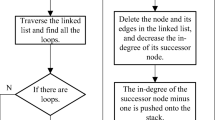The distribution of assembly workstations enables assembly operations to be done in parallel, while the multiple routing of parts in flexible assembly systems allows the opportunistic scheduling of assembly operations. This paper presents an assembly planning system, called the Assembly Coplanner, which automatically constructs an assembly partial order and generates a set of assembly instructions from a liaison graph representation of an assembly based on the extraction of preferred subassemblies. Assembly planning in Coplanner is carried out by the co-operation of multiple planning agents, such as the geometric reasoner, the physical reasoner, the resource manager and the plan coordinator, under the constraints of finding a cost-effective assembly plan in a flexible assembly system. The Coplanner identifies spatial parallelism in assembly as a means of constructing temporal parallelism among assembly operations. This is achieved in the following way: (1) the selection of a set of tentative subassemblies by decomposing a liaison graph into a set of subgraphs based on feasibility and difficulty of disassembly; (2) the evaluation of each of the tentative subassemblies in terms of assembly cost represented by subassembly selection indices; and (3) the construction of a hierarchical partial order graph (HPOG) as an assembly plan. A case study applying the Coplanner to a mechanical assembly is illustrated in this paper.
Similar content being viewed by others
References
Baldwin, D. F., Abell, T. E., Lui, M.-C. M., De Fazio, T. L. and Whitney, D. E. (1991) An integrated computer aid for generating and evaluating assembly sequences for mechanical products. IEEE Transactions on Robotics and Automation, 6(1), 78–94.
Boothroyd, G. and Dewhurst, P. (1984) Design for Assembly, IPC, Inc., Penton.
Boyes, J. W. (1979) Interference detection among solids and surfaces. Communications of the ACM, 22(1), 3–9.
De Fazio, T. L. and Whitney, D. E. (1987) Simplified generation of all mechanical assembly sequences. IEEE Transactions on Robotics and Automation, RA-3(6), 640–658.
DeFloriani, L. and Nagy, G. (1989) A graph model for face-to-face assembly, in Proceedings of IEEE Conference on Robotics and Automation, pp. 75–79.
Erman, L. D., Hayes-Roth, F., Lesser, V. R. and Reddy, R. D. (1980) The Hearsay-II speech-understanding system: interacting knowledge to resolve uncertainty. ACM Computing Survey, 12(2).
Hayes-Roth, B. (1985) A blackboard architecture for control. Artificial Intelligence, 26, 251–332.
Henrioud, J.-M. and Bourjault, A. (1991) LEGA: a computer-aided generator of assembly plans, in Computer-Aided Mechanical Assembly Planning, Homem de Mello, L. S. and Lee, S. (eds), Kluwer Academic, pp. 191–215.
Homem de Mello, L. S. and Sanderson, A. C. (1991a) Representations of mechanical assembly sequences. IEEE Transactions on Robotics and Automation, 7(2), 211–227.
Homem de Mello, L. S. and Sanderson, A. C. (1991b) A correct and complete algorithm for the generation of mechanical assembly sequences. IEEE Transactions on Robotics and Automation, 7(2), 228–240.
Homem de Mello, L. S. and Sanderson, A. C. (1991c) Two criteria for the selection of assembly plans: maximizing the flexibility of sequencing the assembly tasks and minimizing the assembly time through parallel execution of assembly tasks. IEEE Transactions on Robotics and Automation, 7(5), 626–633.
Kusiak, A. (1986) Modelling and Design of Flexible Manufacturing Systems, Elsevier.
Penny Nii, H. (1986) Blackboard systems: the blackboard model of problem solving and the evolution of blackboard architectures. The AI Magazine, 38–53, Summer.
Sanderson, A. C. and Homem de Mello, L. S. (1987) Task planning and control synthesis for flexible assembly systems, in NATO ASI Series, Vol. F33, Machine Intelligence and Knowledge Engineering for Robotic Applications, Wong, A. K. C. and Pugh, A. (eds).
Wilson, R. H. and Rit, J.-F. (1991) Maintaining geometric dependencies in assembly planning, in Computer-Aided Mechanical Assembly Planning, Homem de Mello, L. S. and Lee, S. (eds), Kluwer Academic, pp. 217–241.
Wolter, J. D. (1989) On the automatic planning with fasteners, in Proceedings of IEEE Conference on Robotics and Automation, pp. 62–68.
Author information
Authors and Affiliations
Rights and permissions
About this article
Cite this article
Lee, S., Gil Shin, Y. Assembly Coplanner: co-operative assembly planner based on subassembly extraction. J Intell Manuf 4, 183–198 (1993). https://doi.org/10.1007/BF00123963
Issue Date:
DOI: https://doi.org/10.1007/BF00123963




